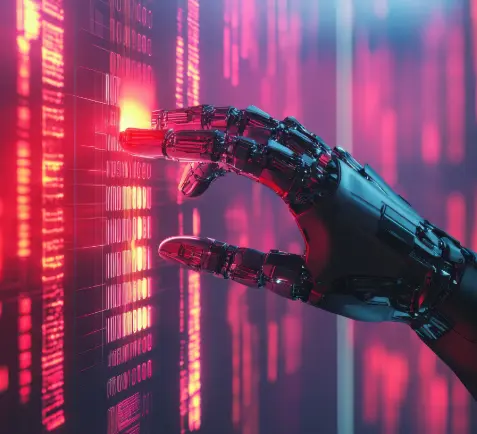Governments worldwide are implementing strict energy and emission policies to drive sustainability and efficiency in industries:
- China’s Dual Control Policy (since 2016) enforces strict limits on energy intensity and usage to regulate industrial consumption.
- The EU’s Fit for 55 Package mandates industries to adopt circular economy practices and cut emissions by at least 55% by 2030.
- Japan’s Green Growth Strategy incentivizes manufacturers to implement energy-efficient technologies through targeted tax benefits.
- India’s Perform, Achieve, and Trade (PAT) Scheme encourages energy-intensive industries to improve efficiency, rewarding those who exceed targets with tradable energy-saving certificates.
These policies reflect a global push toward sustainability, urging industries to innovate, reduce carbon footprints, and embrace energy efficiency.
What’s driving the world to impose these mandates in manufacturing?
This is because the manufacturing industry is at a crossroads. With environmental concerns mounting, the sector faces some stark realities. Annually, it generates 9.2 billion tonnes of industrial waste—enough to fill 3.7 million Olympic-sized swimming pools or cover the entire city of Manhattan in a 340-foot layer of waste. Manufacturing also consumes 54% of the world’s energy resources, roughly equal to the total energy usage of India, Japan, and Germany combined. And with the sector contributing around 25% of global greenhouse gas emissions, it outpaces emissions from all passenger vehicles worldwide.
These regulations are ambitious and necessary. But here’s the question: Can industries meet these demands without sacrificing profitability?
Yes, sustainability initiatives are not a recent phenomenon. They have traditionally been driven by the emergence of smart technologies like the Internet of Things (IoT), which laid the groundwork for more efficient and responsible manufacturing practices.
Today, most enterprises are turning to AI in manufacturing to further drive efficiencies, lower costs while staying compliant with regulations. Here’s how AI-driven manufacturing is enhancing energy efficiency, waste reduction, and sustainable supply chain practices across the manufacturing landscape.
How Does AI Help in Building a Sustainable Future for Manufacturing?
1. Energy Efficiency
Energy consumption is a major contributor to manufacturing emissions. AI-powered systems help optimize energy usage by analyzing production data, monitoring equipment performance, and identifying inefficiencies.
- Siemens has implemented AI in its manufacturing facilities to optimize energy usage in real-time. By analyzing historical data and predicting energy demand, Siemens reduced energy consumption by 10% across its plants.
- In China, manufacturers are leveraging AI-driven energy management platforms to comply with the Dual Control Policy. These systems forecast energy consumption patterns and recommend adjustments to stay within mandated limits.
Impact: AI-driven energy management systems not only reduce costs but also ensure compliance with stringent energy caps, proving that sustainability and profitability can go hand in hand.
2. Waste Reduction
Manufacturing waste is a double-edged sword—it pollutes the environment and represents inefficiencies in production. AI helps manufacturers minimize waste by enhancing production accuracy and enabling circular practices like recycling and reuse.
- Procter & Gamble (P&G) uses AI-powered vision systems to detect defects in manufacturing lines, reducing waste caused by faulty products. This not only ensures higher quality but also significantly reduces raw material usage.
- The European Union‘s circular economy mandates have inspired manufacturers in the steel and cement industries to adopt AI-driven waste recovery systems. For example, AI algorithms are used to identify recyclable materials from production waste streams, enabling closed-loop systems.
Impact: AI helps companies cut down on waste while complying with mandates like the EU’s Fit for 55 package, making sustainability an operational advantage.
3. Sustainable Supply Chains
Supply chains in manufacturing are vast and complex, often contributing significantly to carbon footprints. AI-powered analytics enable manufacturers to monitor and optimize supply chain operations, from sourcing raw materials to final delivery.
- Unilever uses AI to track and reduce the carbon emissions of its suppliers. By analyzing data across the supply chain, the company ensures that partners comply with sustainability standards, reducing overall emissions.
- In Japan, automotive manufacturers are leveraging AI for supply chain optimization. AI algorithms optimize delivery routes and load capacities, cutting fuel usage and emissions while benefiting from tax incentives under Japan’s Green Growth Strategy.
Impact: By making supply chains more efficient, AI not only reduces emissions but also builds resilience, helping manufacturers adapt to global disruptions while staying sustainable.
4. Predictive Maintenance
Industrial machinery is a significant source of emissions and waste when it operates inefficiently or breaks down. AI-driven predictive maintenance ensures that equipment is operating at peak performance, reducing energy consumption and downtime.
- General Electric (GE) uses AI-powered sensors to monitor the health of manufacturing equipment. These systems predict failures before they happen, allowing timely maintenance and reducing energy waste.
- AI-enabled predictive tools are also being adopted under India’s PAT scheme, where energy-intensive industries leverage real-time equipment monitoring to enhance efficiency. (Source)
Impact: Predictive maintenance not only extends the lifespan of machinery but also ensures that energy-intensive equipment operates within sustainable parameters.
The Road Ahead
AI is no longer just a tool—it’s a critical partner in achieving sustainability. By addressing challenges in energy usage, waste management, and supply chain optimization, AI helps manufacturers not just comply with global mandates but thrive in a world increasingly focused on sustainability.
As countries continue to tighten regulations and push for decarbonization, manufacturers that embrace AI stand to gain a competitive edge while contributing to a cleaner, greener future.
Mantra Labs helps manufacturers achieve sustainable outcomes—driving efficiencies across the shop floor to operational excellence, lowering costs, and enabling them to hit ESG targets. By integrating AI-driven solutions, manufacturers can turn sustainability challenges into opportunities for innovation and growth, building a more resilient and responsible industry for the future.
Knowledge thats worth delivered in your inbox






